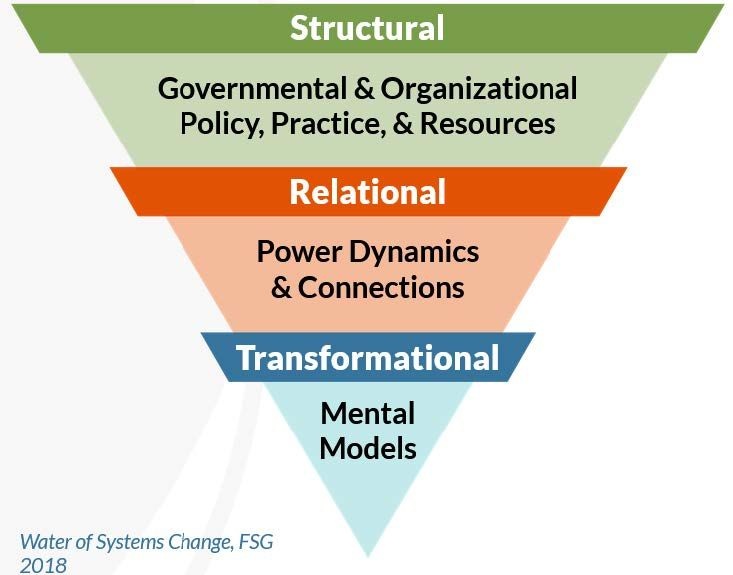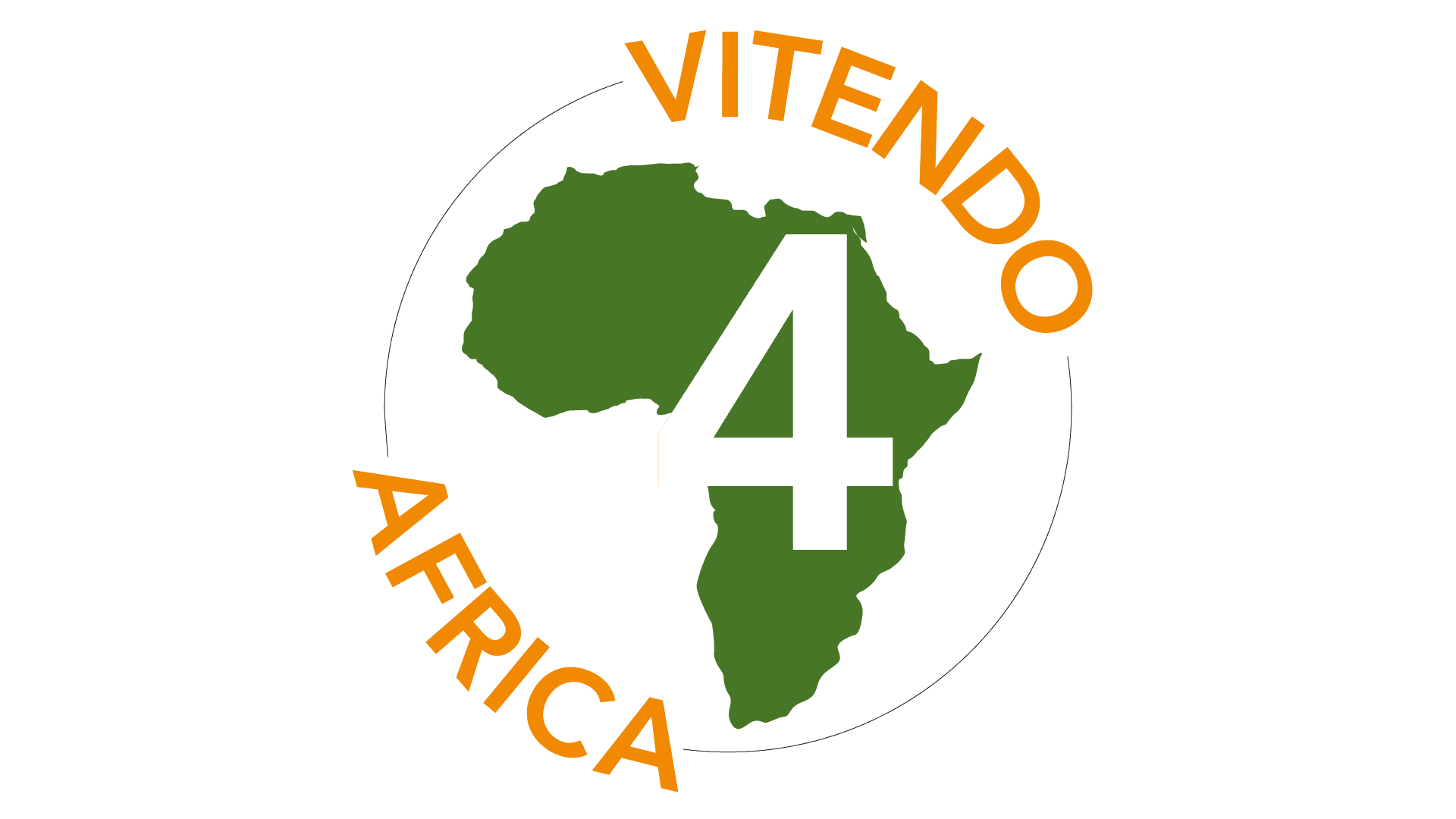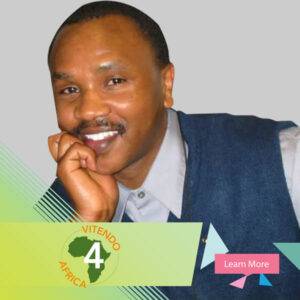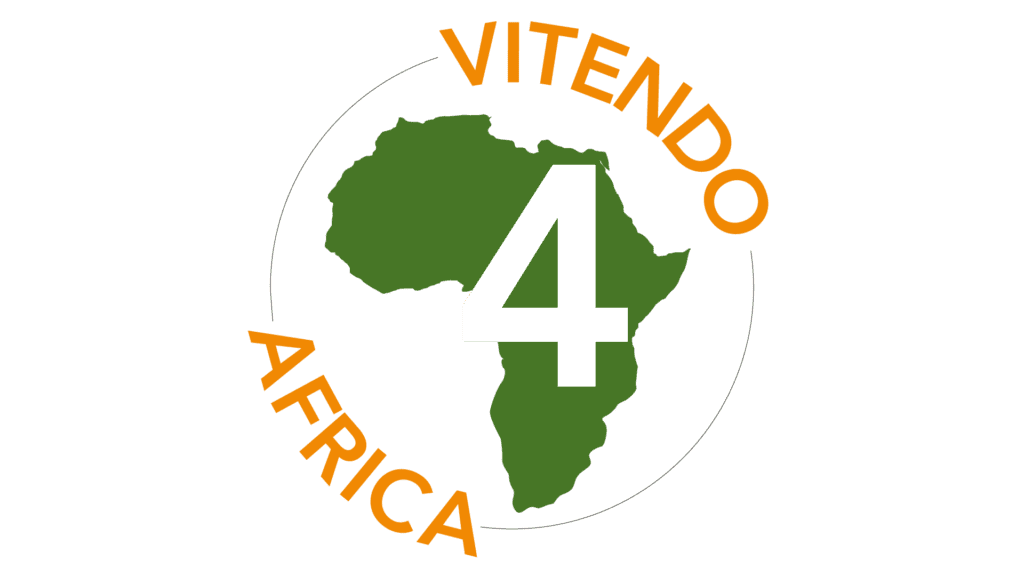The Water of Systems Change
 “The Water of Systems Change” was a framework developed by FSG (2018). It illustrates the three levels of change needed to create deep, lasting social impact within systems — from surface-level shifts to deeper cultural transformation.
“The Water of Systems Change” was a framework developed by FSG (2018). It illustrates the three levels of change needed to create deep, lasting social impact within systems — from surface-level shifts to deeper cultural transformation.
Here’s a breakdown of each level in the inverted pyramid:
1. Structural Change (Top – Green)
This is the most visible and formal level of change. It focuses on the policies, practices, and resource flows that shape how organizations and governments operate.
- What it includes:
- Laws, regulations, and policies
- Institutional practices and procedures
- Funding allocations and resource distribution
- Goal: Create equitable systems by changing formal structures that perpetuate inequality or inefficiency.
2. Relational Change (Middle – Orange)
This level focuses on the quality of relationships and power dynamics within the system. It’s about how individuals and organizations interact, collaborate, and share influence.
- What it includes:
- Power dynamics (who has a voice, who makes decisions)
- Connections and trust among stakeholders
- Collaboration and communication patterns
- Goal: Build stronger, more equitable relationships and networks that allow for collective action and mutual support.
3. Transformational Change (Bottom – Blue)
This is the deepest level of systems change — shifting mental models, beliefs, and cultural narratives that influence behavior and decision-making.
- What it includes:
- Deeply held assumptions and values
- Worldviews that shape how problems and solutions are understood
- Cultural norms and biases
- Goal: Transform the way people think, so that change is sustained from within and reflected in both relationships and structures.
In summary:
To achieve true, sustainable systems change, work must happen across all three levels:
- Structural (rules and resources)
- Relational (power and relationships)
- Transformational (mindsets and culture)
Deep transformation begins at the bottom — changing mental models — which then influences relationships and ultimately drives structural change.
Water of Systems Change Framework connects directly to Vitendo4Africa’s (V4A) work in empowering immigrant and refugee families in St. Louis and across Missouri:
Applying the Water of Systems Change to Vitendo4Africa
1. Transformational Level — Shifting Mental Models (Deepest Level)
This is where Vitendo4Africa begins its impact — by changing how immigrant and refugee communities, institutions, and the broader public think about immigrants, belonging, and empowerment.
Examples from V4A’s work:
- Promoting positive narratives about immigrants through events like the Annual Gala and Cultural Celebrations, which showcase the strengths and contributions of African communities.
- Educating youth and families about self-worth, leadership, and identity, helping to counter internalized biases or limiting beliefs.
- Offering mental health and self-care workshops that normalize discussions around wellness in immigrant communities.
Result:
Shifts in perception lead to greater inclusion, dignity, and self-empowerment — forming the foundation for all other change.
2. Relational Level — Changing Power Dynamics & Building Connections
V4A strengthens the social fabric that supports immigrants through partnerships, mentorship, and leadership development.
Examples from V4A’s work:
- Building partnerships with schools, health institutions, and government agencies to ensure immigrant voices are represented.
- Empowering youth leaders through the Mentorship and TRACTION programs, helping them build confidence and networks with professionals and peers.
- Creating intercultural bridges between African immigrants and the broader St. Louis community through community dialogues and collaborative events.
Result:
New relationships and shared power help break isolation, increase advocacy capacity, and foster trust between communities and institutions.
3. Structural Level — Influencing Policies, Practices, and Resources
At this level, V4A works to influence formal systems and create long-term, institutional change.
Examples from V4A’s work:
- Partnering with local and state agencies (e.g., the Regional Response Team) to improve access to healthcare, housing, and education for immigrants.
- Advocating for inclusive policies and equitable access to resources through representation on advisory boards and task forces.
- Designing programs that address systemic issues — like language barriers, road safety, and economic empowerment — through culturally responsive approaches.
Result:
More equitable systems and resource distribution that meet the needs of diverse immigrant families and ensure sustained change.
🔁 In Summary
Vitendo4Africa’s impact moves from the inside out:
- Transformational: Changing hearts and minds.
- Relational: Building strong, equitable relationships.
- Structural: Influencing systems, policies, and access.
Together, these levels create a cycle of empowerment — where community members not only adapt to a new environment but also shape it for the better



